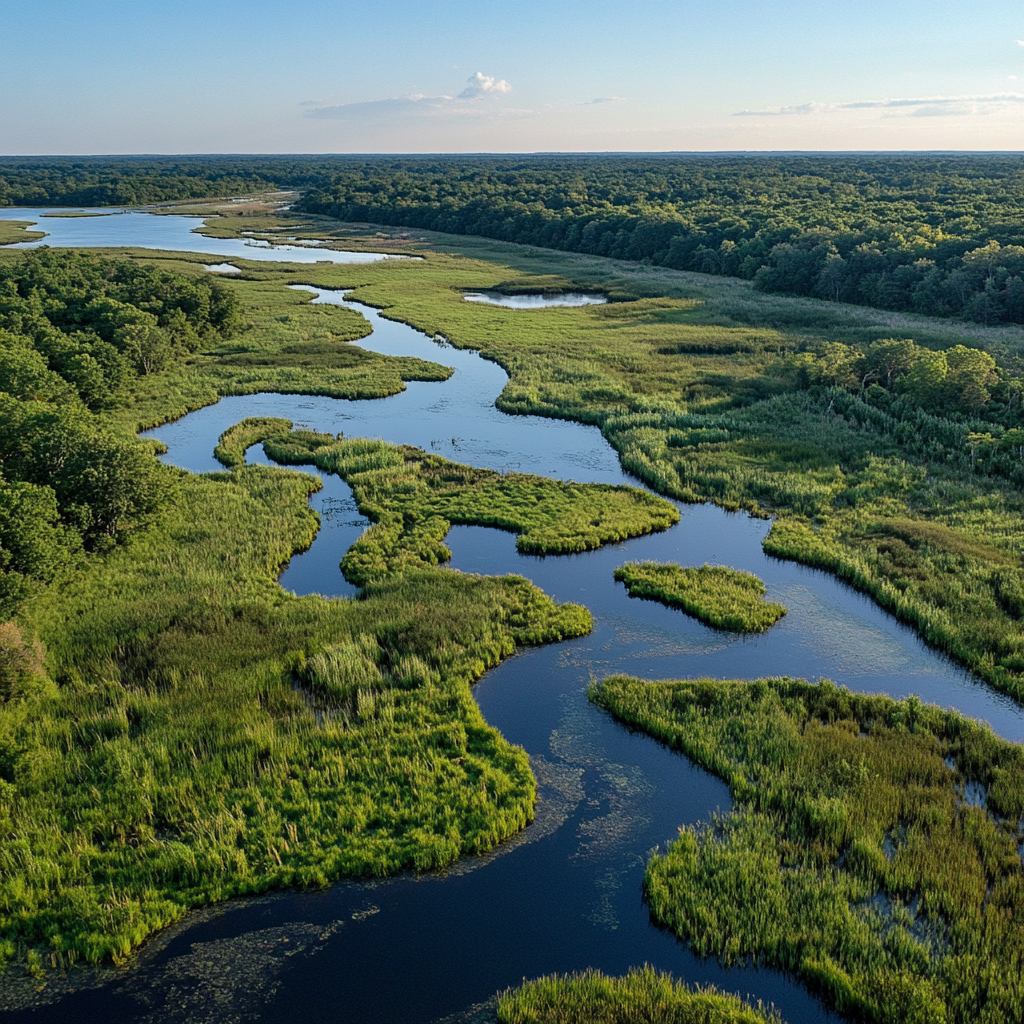Long Island’s nature preserves play a key role in maintaining the region’s ecological balance. They provide a home for numerous species of flora and fauna, regulate climatic conditions and contribute to improving the quality of life of local residents. However, anthropogenic factors such as pollution, development and climate change have significantly affected the condition of these unique areas.
Problems and challenges in the protection of natural areas
Over the past decades, the health of Long Island’s nature preserves has been deteriorating due to a number of factors. Water and soil pollution led to the destruction of ecosystems, especially in coastal areas. Plastic litter, chemical waste and disruption of the natural water cycle have become major threats to the region’s biodiversity.
Besides, population growth and expanding urbanization reduced the area of protected areas. Infrastructure development is often carried out without taking into account environmental impacts, resulting in the destruction of animal habitats. Climate change, such as rising sea levels, accelerates soil erosion, threatening the sustainability of entire ecosystems.
Major Long Island Wildlife Restoration Projects
Restoration projects on Long Island cover a wide range of activities. Here are the key ones:
- Soil erosion control programs. These projects are aimed at strengthening coastlines and restoring vegetation cover.
- Cleaning nature reserves of plastic and other debris. Regular volunteer activities help reduce pollution and return natural areas to their original appearance.
- Reintroduction of endangered plant and animal species. Biologists are working to return rare species that play an important role in the ecosystem to Long Island.
- Restoration of aquatic ecosystems. Includes restoration of wetlands, streams and other bodies of water vital to local flora and fauna.
- Creation of educational programs for local residents. Increasing public awareness of the importance of nature reserves contributes to their long-term protection.
These measures are aimed not only at restoring existing reserves, but also at preventing their further destruction.
The role of the local community and volunteers in nature restoration
Local community participation plays a key role in the protection and restoration of natural areas. Volunteer organizations conduct regular campaigns to clean up trash, plant trees, and monitor the state of ecosystems. Residents’ activity also includes participation in educational programs and environmental initiatives.
In addition, local residents can do their part by reducing plastic use, supporting environmental projects financially, and implementing eco-friendly practices in their daily lives. These actions build a long-term commitment to protecting the environment and help preserve Long Island’s unique natural heritage.
Environmental and economic benefits from conservation of nature reserves
Preserving Long Island’s nature preserves has both ecological and economic value. Restored ecosystems improve air, water and soil quality, which has a positive impact on the health of local communities. Nature reserves also act as a barrier, protecting coastal areas from flooding and erosion.
Economic benefits are expressed in the development of tourism, which brings significant income to the region. Natural parks and reserves attract tourists, supporting local businesses and creating jobs. Sustainable development of natural areas ensures a balance between economic interests and environmental stability.
The future of nature reserves plans and prospects
The future of Long Island‘s nature preserves depends on a comprehensive approach to restoration and conservation. In the coming years, it is planned to implement new infrastructure projects aimed at improving the condition of ecosystems. Increased funding on the part of public and private organizations will be an important step for the implementation of these plans.
Particular attention is paid to the development of long-term monitoring programs for the condition of natural areas. They will allow for timely identification and elimination of problems, preventing further destruction of ecosystems. The future of Long Island’s wildlife refuges is a collaborative effort between officials, scientists and local residents.
Restoring Long Island’s nature preserves is a long-term process that requires everyone’s input. Preservation of natural areas is important not only for the ecology of the region, but also for future generations. Everyone can do their part by supporting restoration projects and living an environmentally conscious lifestyle.
First of all, Fire Island National Forest and Connetquot River State Park require attention. These areas face serious problems such as pollution, erosion and loss of biodiversity.
Residents can participate in volunteer activities such as picking up trash and planting trees, as well as supporting environmental foundations financially. In addition, mindful behavior in daily life, such as reducing plastic use, also plays an important role.

